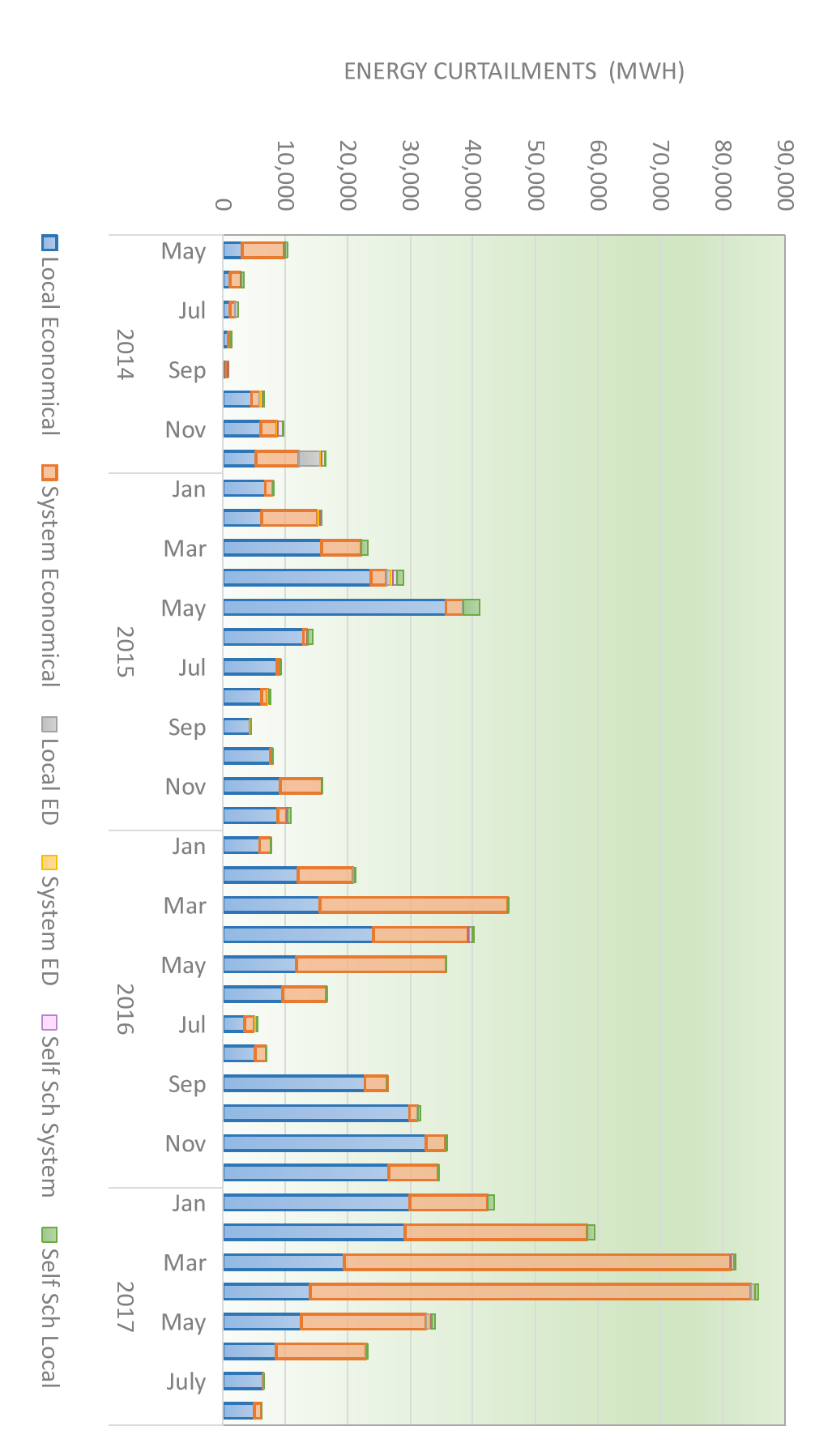Electrolyzers Lower Renewable Energy Curtailment, Lowering Costs
Solar and wind energy are intermittent. Solar panels produce the most energy when the sun shines brightly. Wind farms produce the most energy when the wind is blowing strongly. But, that might not be the time that the energy needs to be used. If the renewable sources produce more energy than can be used by the grid, the grid operator needs to limit (i.e. curtail) the amount of renewable energy that is accepted by the grid or else the grid will become unstable.
Curtailment occurs when there is plenty of renewable energy available for use, but the Grid operator does not allow the renewable energy source to put the power on the grid. Reasons can vary. Sometimes it is related to other matching loads being available or because there is a need to not over-load transmission lines. It could also depend on how fast plants can come on line to receive the energy or if there are other inexpensive options to dispatch first.
Regardless of the reason that renewable energy is curtailed, it is important to note that doing so results in a loss of clean energy Production. Curtailment of renewable energy in California reached 8000 MW in March 2017: enough to power more than 1 million homes. According to the LA times, things got so bad in California in March 2017, that the California utilities paid Arizona to take the electricity. An consumers of renewable energy needed to pay that cost through their electricity bills
And, the problem is projected to grow.
Wouldn't it be great if the excess electricity could be used rather than California having to pay to have Arizona take the energy?

The monthly amount of renewable energy that California curtailed. Source Cal-ISO
Electrolyzers can use the electricity productively. A large bank of electrolyzers can use hundreds of MW of electricity at one time. They can be turned on when renewable energy sources produce more energy than the grid can use for other purposes, and simply turned off when the energy can be used elsewhere on the grid. And, the electrolyzer system can make renewable gasoline and other products that will help lower the world's carbon footprint.
And, the process is economic when the electricity cost is low. At present, most of the expense associated with operating a stack of electrolyzers aside from the initial capital outlay is the cost of electricity. Electrolyzers can be turned off and on intermittently and run during non-peak hours when there is excess energy available. By leveraging the excess renewable energy that is available, one can produce renewable fuels and chemicals via electrolysis at a competitive cost.
Dioxide Materials is developing carbon dioxide electrolyzers and alkaline water electrolyzers to use up the excess renewable energy. The electrolyzers use Sustainion® Alkaline Anion Exchange membranes for improved performance. Advantages include:
- CO2 conversion at half the energy input as the competition
- Water electrolyzers that do not need precious metals (no platinum)
- Long lifetimes
- Reduced cost

